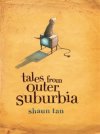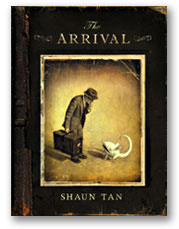As much as I enjoy writing blogs, I love reading them. There’s nothing more exciting than discovering a new blog – a new voice, source of ideas and information.
Just today I noticed that Bright Ideas Blog – a blog many of us have at the top of their reading list – has kindly included my blog in a list of blog nominations. It’s a ‘pass the parcel’ kind of activity, at the end of which we all end up with an enormous list of new blogs to investigate. Wonderful!
I’ve found out from What Ed Said that ‘it’s part of an initiative called ‘Vale a pena ficar de olho nesse blog’, which means ‘It’s worth keeping an eye on this blog’. Great idea.
For those I am awarding below, here are a few rules to follow:
1- Copy and display the picture of the award given to you;
2- Link back to the blog that nominated you;
3- Nominate 10 different blogs yourself;
4- Inform the people you nominated, so they can in turn, continue the chain and spread the word about other great blogs out there.
My Google Reader is bursting at the seams and needs house-cleaning. I revise it fairly regularly to keep it relevant to my needs. Over time, my reading focus changes.
Whereas I enjoyed educational blogs with a technology focus initially, now I read these less, since I discover new technologies in Twitter and Facebook.
Whereas I used to read The Great Bloggers, the big guys, I now also like to read the less well known bloggers who might have more time for face to face teaching and so share detailed experiences of what works and what doesn’t.
Whereas I used to read like-minded blogs, now I enjoy reading different voices to push my thinking.
Whereas I used to read education blogs only, blogs about the future of education, or blogs about my own subject areas, eg literature and languages, now I’m discovering terrific science, maths, art, animation blogs.
I think the best thing about blogs is that they have a voice. Unlike professional, formal, peer-reviewed information, blogs reflect the author. Reading the blog means getting to know the person with the voice.
I had trouble selecting these blogs, keeping to the limit. In no order whatsoever, and not all of these what you would call educational blogs:
Lisa Hill’s literature blog – ANZ LitLovers LitBlog
BibliOdyssey (Books, illustrations, science, history, visual materia obscura).
Art21 blog an amazing art resource for education
Urban Sketchers is a nonprofit organization dedicated to raising the artistic, storytelling and educational value of location drawing, promoting its practice and connecting people around the world who draw on location where they live and travel. We aim to show the world, one drawing at a time.
The Daring Librarian – Gwyneth Jones – Twitter bio: The Daring Librarian: Celt. Teacher Librarian & Technology Specialist. Redhead. Digital Collaborator. Victorian Steampunk. Second Lifer. Goofball.
Sean Nash at Nashworld Must always mention Sean Nash – nobody else like him
CMIS Fiction Focus I trust this blog to keep me up to date with books and reading for our young people
Steve Collis on HappySteve – Love this blog, fingers in many pies and fun to read.
New blogger – Nicholas Cowall: Music solo performance at Braemar (Nicholas has recently burst into the blogosphere with energy and passion; an example to all teachers. AND he has a schedule which is not for the faint-hearted, so he puts to shame those who claim not have time for blogging and the like.)






